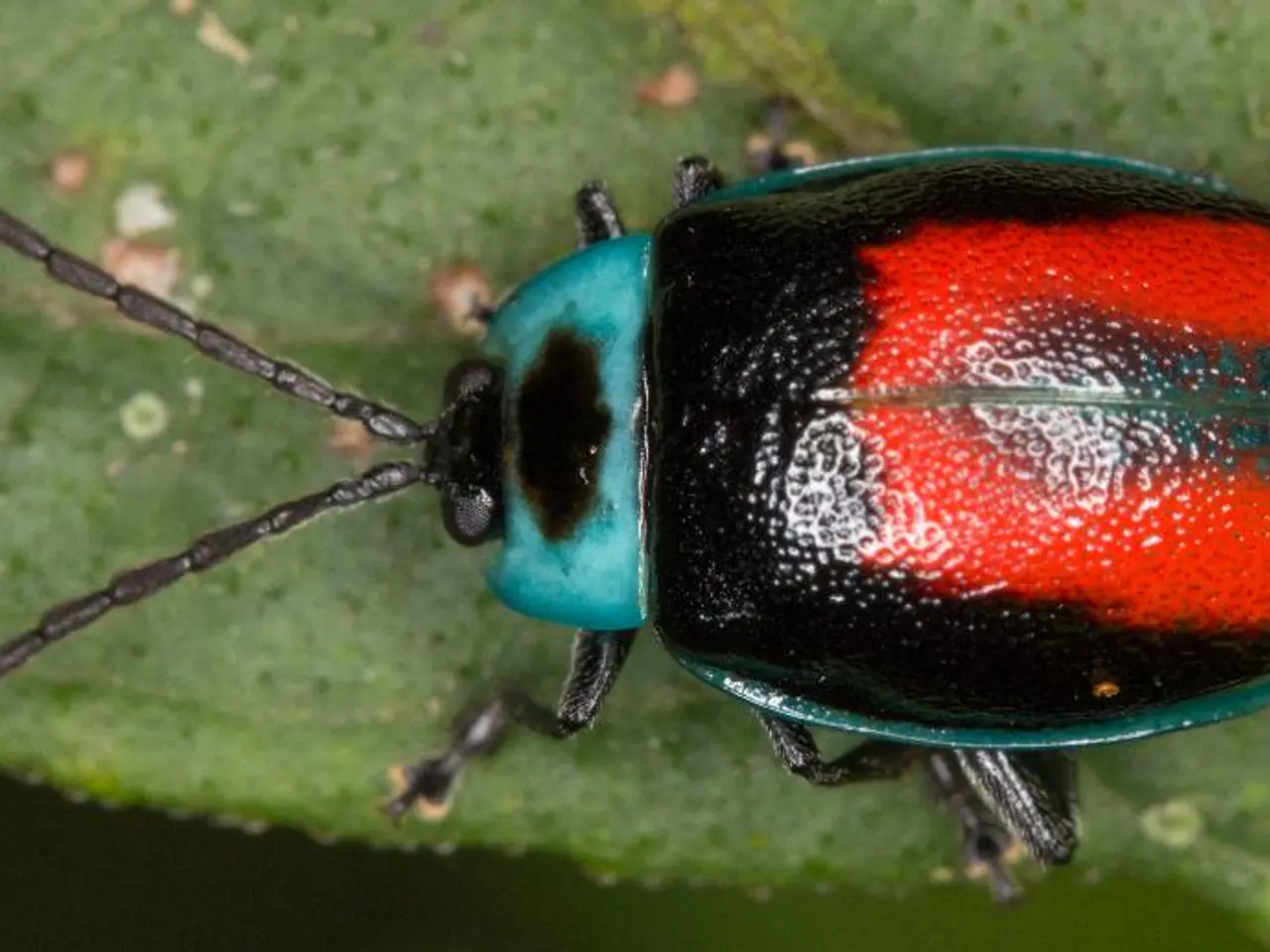Tiny Red Pests: An Invasive Species Causing Concern with Their Swarming Habits
Clover mites, tiny reddish-brown arachnids, are a common nuisance in and around buildings. Although they do not bite or spread disease, they can invade homes in large numbers during cool, wet weather and leave staining when crushed. To effectively reduce the likelihood and severity of clover mite infestations, a combination of prevention and control strategies is recommended.
## Prevention Measures
The most effective first line of defense is sealing gaps around windows, doors, and foundations with caulk or weatherstripping. Maintaining an 18–24 inch vegetation-free zone of mulch or stone along the foundation, trimming grass, shrubs, and other plants near buildings, and reducing moisture near foundations can also help reduce mite habitat. Indoor humidity control, keeping indoor humidity below 50%, and regular cleaning and maintenance of exterior surfaces are additional prevention measures.
## Control Measures
Vacuuming visible clover mites indoors and disposing of the vacuum bag outside, using a strong water spray outdoors to dislodge mites from building exteriors, and applying outdoor insecticides labeled for mite control around the foundation, doors, and windows are effective control measures. Only use insecticides when infestations are heavy or persistent, and always follow product instructions. Eco-friendly solutions, focusing on creating barriers and using minimal chemical intervention for long-term prevention, are also available from some pest control companies.
## Additional Tips
Regularly inspect windowsills, walls, and outdoor vegetation for mite activity, and schedule regular follow-up services if professional pest control is used to maintain protective barriers. Clover mites are most active between 50°F and 75°F, and outside, they may hide under mulch, landscape hardware stones, logs, and loose tree bark before becoming active again in the spring. Most outbreaks of clover mites occur in May, particularly in well-fertilized lawns close to the sunny side of house foundations.
By combining these prevention and control strategies, you can effectively reduce the likelihood and severity of clover mite infestations in homes and buildings. It is essential to stay vigilant and proactive in maintaining a mite-free environment.
In the realm of home-and-garden maintenance, regularly trimming grass, shrubs, and other plants near buildings, and maintaining an 18–24 inch vegetation-free zone of mulch or stone along the foundation can help prevent clover mite infestations. Gardening enthusiasts may find that reducing moisture near the home's foundation and managing indoor humidity levels below 50% are also crucial prevention methods against these nuisance arachnids.





